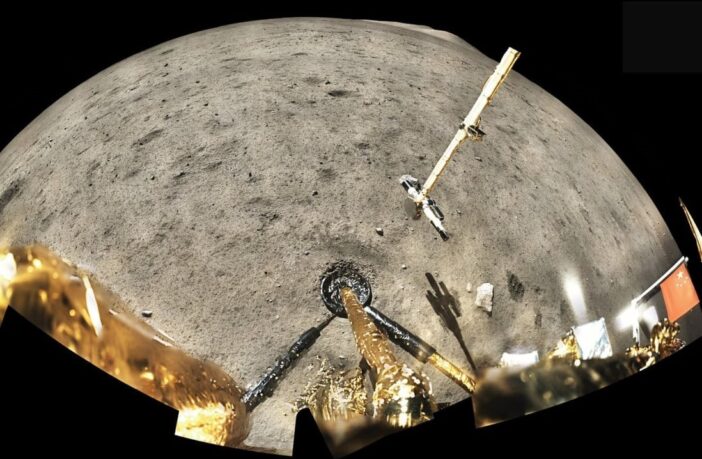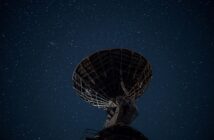Glass beads formed from the cooling of melted material ejected by and found strewn across the Moon could store substantial quantities of water, according to a study supported by OU academic, Professor Mahesh Anand.
These findings, published in Nature Geoscience, were a result of analyses of samples from China’s Chang’e-5 mission (one of the lander legs and the robotic arm that collected the soil sample, analysed in this work, shown in the image above). It suggests that lunar soils contain a higher amount of water derived from solar wind (the flow of charged particles from the sun) than previously thought.
Although the Moon was once thought to be dry, analyses of samples collected during the Apollo missions revealed water trapped within minerals from the lunar interior and orbiters have detected the presence of water across the lunar surface.
It is thought that the interaction of the solar wind with surface materials could produce water and sustain a water cycle on the Moon’s surface. However, the host of such a reservoir of lunar surface water has yet to be identified.
An international team of experts analysed the water content within glass beads produced by impact events, extracted from Chang’e-5 lunar soil samples. They identify water stored within the impact glass that is consistent with a solar wind origin.
The distribution of water within individual beads indicates that water can rapidly accumulate in glass beads by diffusion, over timescales of only a few years, and be rapidly released. The study suggests this presents an efficient recharge mechanism to drive an active water cycle on the lunar surface.
Mahesh Anand, Professor of Planetary Science and Explorations at The Open University (OU) was a co-author of the study. His specific involvement, which was funded by the UK Science and Technology Facilities Council (STFC), was to help interpret the data on the lunar impact glass beads and provide scientific context based on his team’s previous research on lunar samples.
Professor Anand highlighted the significance of the findings:
“This work is an important advancement in our understanding of the abundance, source, and storage of water at the lunar surface. In this work, lunar impact glass beads collected by China’s Chang’e-5 mission were studied. The results suggest that the lunar soils contain a much higher amount of solar-wind-derived water than previously thought.
“Furthermore, this solar-wind-derived water appears to diffuse in and out of the glass beads over a time scale of a few years, confirming an active water cycle at the Moon. This would be of significant interest for creating resources during lunar expeditions using materials found on the Moon, known as in situ resource utilization (ISRU).”
The authors suggest that the water trapped in impact glass beads could represent a potential water resource for future lunar exploration that is relatively easy to extract. They conclude that impact glass may host similar water reservoirs on other airless bodies.
Read the full paper on Nature Geoscience.



